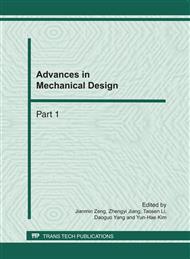p.1145
p.1151
p.1158
p.1165
p.1171
p.1175
p.1180
p.1185
p.1192
Experimental Research on Influence of Loading Method on Dynamic Behavior of Recycled Concrete
Abstract:
The exploitation and application of recycled concrete are more and more extensive in latest years. But the research on the mechanics characteristic of recycle concrete under cyclic loading is very little. Six types of recycled concrete specimens were made in laboratory. After they were cured for a certain age, we have made a series of cycling loading tests on them. In the tests the maximum and minimal stress ratio, the loading frequency and loading waveform were all considered. The mechanics characteristic of recycled concrete under static loading and cyclic dynamic loading were contrasted. After analyzing the test results, we could get that the maximum stress and minimal stress ratio, the loading frequency and loading waveform influenced the unloading and loading modulus of recycled concrete directly in the tests, and the fatigue life of recycled concrete changed with the loading method.
Info:
Periodical:
Pages:
1171-1174
Citation:
Online since:
February 2011
Authors:
Price:
Сopyright:
© 2011 Trans Tech Publications Ltd. All Rights Reserved
Share:
Citation:


